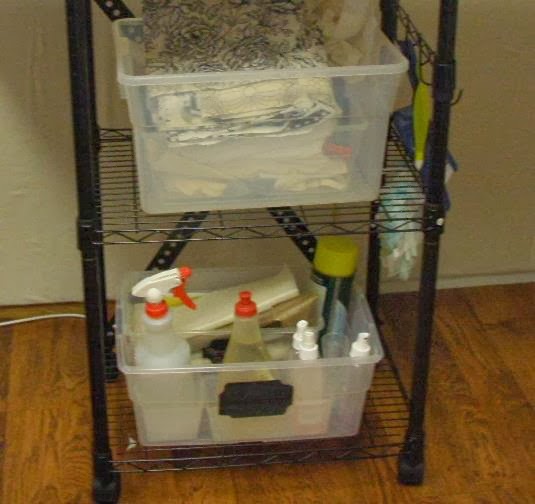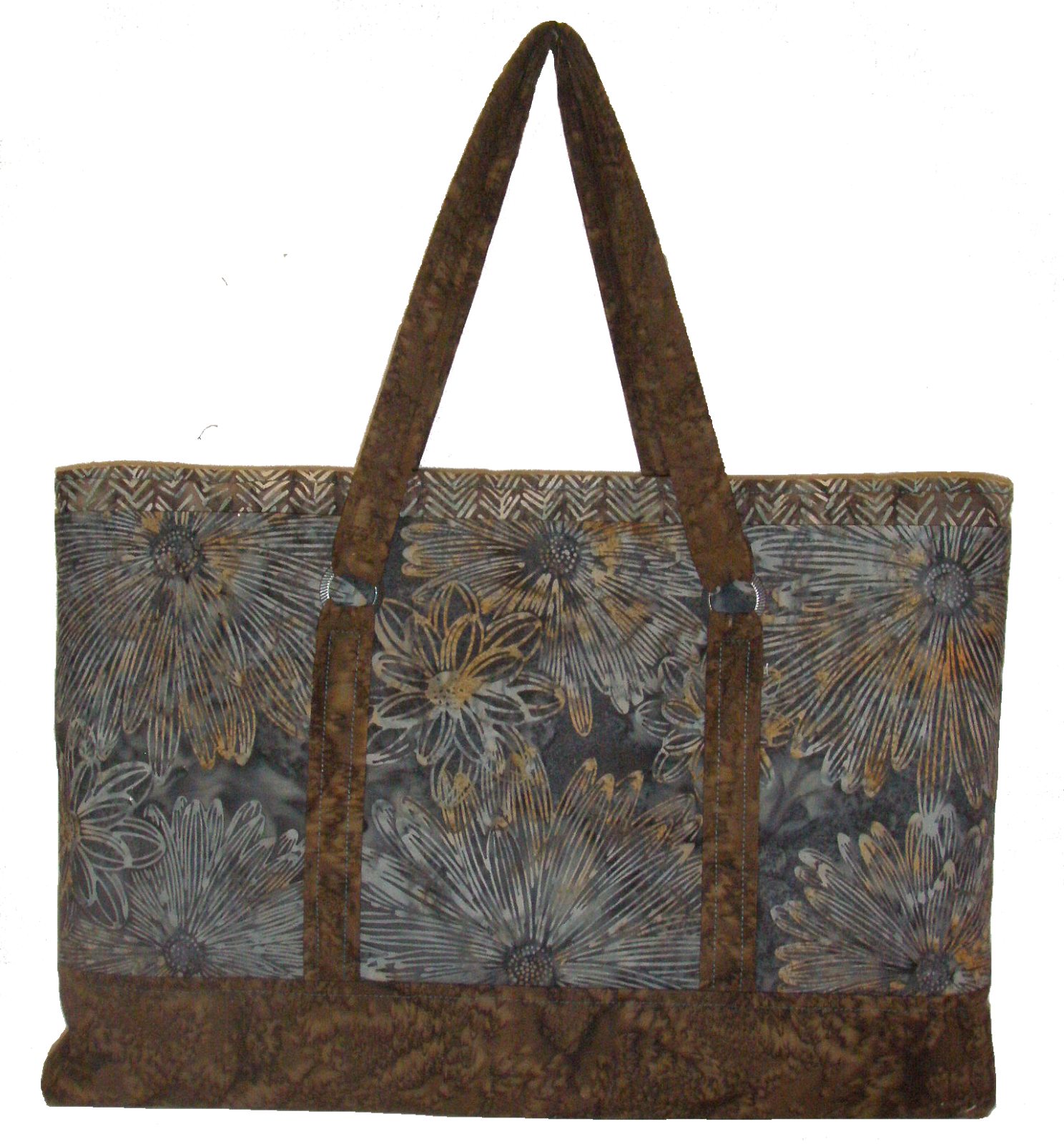How old is my ironing board? The legs are harvest gold if that tell you anything. Since I am an avid quilter at this point in my sewing life I really need more wide surface and that "long pointy end" pretty much goes to waste. I also needed to be able to move it easily because my sewing room is very small and it stands in front of my design wall.
I purchased a small roll around cart from Walmart. With my hubby's help we replaced the top to
give me more overall space with a smaller foot print. The shelves allow for additional storage.
I measured the plastic containers I wanted to use and placed the shelves to fit the containers. Now all my pressing clothes. applique pressing sheets, starch, filling container for my iron, etc. are within easy reach.
After putting the cart base together we added some extra bracing to the back using some metal strips and plastic electrical clamps. Chuck painted the metal black to match the legs before attaching them.
Black knobs on the wooden top that came with the cart just drop into the hollow metal tubes that are the legs. We purchased a large dowel, cut it into four sections and screwed them into a piece of oak plywood 20" x 42" we already had in the garage. Chuck rounded off the corners. We put the dowels into the tubes. (I didn't think to take pictures until I we were finished so I did a quick sketch.)
I made a cover using one layer of Warm and Natural batting and muslin. I cut the muslin about four inches larger all the way around; put a casing along the edge and used 1/4" elastic for the string. I pulled the elastic tight and tied it to make the cover fit snugly over the wood. It's easily removed to be washed or replaced.
Ta-dah! Because it has locking casters on the bottom it stays in place when I'm pressing and is easily moved out of the way when I need my design wall. It's also the same height as my cutting island so I can easily slide the two together and have an extra large horizontal surface if I need it.
Last, I had access to electricity near the ceiling on this wall so I was able to plug my iron in "up high". The cord doesn't drag along the floor anymore. (I've lost more than one iron because I caught my foot in the cord and pulled the iron off onto the floor.





























